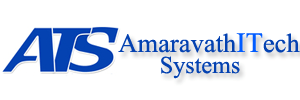Many restaurant owners were forced to shutter their dining rooms or even shut down their businesses immediately in the early days and weeks of the COVID-19 pandemic to avoid the transmission of the coronavirus. That also meant dramatically cutting down some ad campaigns for several restaurateurs.
Restaurants are now slowly able to reopen their doors to the public, months after the pandemic. This involves reopening their dining rooms and patios for others, while some have preferred to reopen for only takeout and delivery. No matter what path restaurants want to take, selling to diners who have spent the past few months alone at home is one of the greatest obstacles.
The pandemic’s impact to date
The economic toll on the restaurant sector by COVID-19 has not been fairly spreading. Whereas after the pandemic, pizza franchises retained or boosted profits, casual-dining and fine-dining restaurants saw their earnings dropped by as much as 85 percent. Revenues dropped to zero at certain fine-dining establishments.
Each restaurant’s performance during the crisis has depended largely on the following factors:
- Off-premise versus on-premise sales mix: Unsurprisingly, before the recession, restaurants with strong off-premise revenues were faring better than those that leaned more on dine-in sales.
- Reliance on day-part occasions: Restaurants who have produced much of their revenue from daytime eating periods, such as people having breakfast or coffee on the way to work, have been adversely impacted by so many people working from home.
- Urbanicity: In restaurant-traffic decreases across states, there are significant inequalities. In heavily populous states such as Connecticut and New York, losses have been the largest.
- Digital maturity: During this recession, a large online shopping presence, digital loyalty services, and comprehensive customer relationship management (CRM) structures have become lifelines for restaurants, as levels of consumer digital interaction have increased. If developments in China are any indication, even after the crisis, customers will stay more digitally active. For eg, Starbucks China saw a 12 percentage point rise in the share of post-crisis digital transactions, from 15 percent in January to 27 percent in late March (down from a peak of 80 percent in February).
- Role of value: During the recession, market expectations of value and the proliferation of discounts have increased the profits of some restaurants, as consumers constantly look for opportunities to save money, experiencing financial losses and anticipating ongoing financial uncertainty.
As the industry continues its rebound from COVID-19 and begins its re-negotiation of preferences with the restaurant client, we understand that business-as-usual would be anything but. They will be a far more vigilant and demanding consumer, not necessarily as far as the price or preference is concerned, but as far as their sense of protection, cleanliness, and overall efficiency is concerned. Not only within the realm of our hygiene and cleanliness standards, the events of this pandemic have raised warning bells, but those of our merchants, and their merchants, and their merchants. Everyone should expect that the next level of scrutiny as it relates to restaurants after the physical plant will be the food quality and supply chain.
Supply Chain Visibility (GS1 Standards)
For several years, some of the more advanced restaurant companies have preached the value of awareness of the supply chain and the opportunity to trace goods from the field to the back-door to the plate. There is the technology to do this, but all but the most diligent have been scared away by the deployment and start-up time and expenditures to do so. The GS1 initiative’s purpose and dedication are to provide a shared “language” and system for monitoring and documenting all goods from their point of production (or growth) to the manufacturing plant, the factory, the broader, and finally to the restaurant. By marking each container with a special code (GTIN), in case a foodborne disease is recognized in a package, we will practically be able to trace it down to the farmer or even the field. Today, the technology exists; it merely takes tremendous commitment on the part of foodservice operators and distributors to choose to comply with requirements, to configure their programs to help and deploy GTIN amounts.
Greater emphasis on Food Safety Scoring and Cleanliness Standards
It is not outside the realm of possibility to say that there would be greater inspection and insight into the dedication of restaurants to a higher standard of standards, keeping on the subject of food safety and cleanliness. The FDA, or possibly even a third party or private entity that publishes this information to the community-at-large via the social media that have been formed, can impose and enforce this. Via several networks like Yelp, we have seen this form of crowd-review activity, and there is no reason to think that these channels and others will not be produced and encouraged to serve as supervisors working “for the safety of the consumer-at-large.” As restaurant owners, to escape the reputation of being deemed less-than-committed to the notion of delivering a premium product in a healthy and clean environment, it will be important to respond quickly and decisively to any issues posed by any of these networks. While in the past, when a restaurant earned so much and was eventually found and locked, the only way the public learned about a code violation was, we would logically expect that the idea of a numeric score will be enacted that will be posted on the business window creating a standardized indicator of safety conformity like all other competitive establishments.
Accelerated migration from on-premise to off-premise
It is fair to say that in the wake of the P-C19, those who provide off-site service, whether it is shipping, catering, or pickup, are likely to recover more rapidly. The return to profitability is likely to take considerably slower for those who are still strongly or completely reliant on on-site support. Therefore, promoting an omnichannel distribution plan for your activities is now and will continue to be relevant in the future. This could mean a menu overhaul to ensure that menu products, packaging, and an internal, external, or hybrid distribution approach are more “transport-friendly.” While the end of COVID-19 may be welcomed by several customers and return to restaurants as a sign of encouragement and unity, about another 1/3 may be wary and wait for some time, whilst the final 1/3 will not return for a long time to regular dining-out habits. In other words, if you can distribute it yourself and skip the 25 percent and higher rates from the existing crop of distribution service providers, it is also necessary not only to provide several platforms but to build them with an economical business model. Looked at a banded approach where you increase your viability by using internal capital to make local deliveries and then aim to use third parties for the longer deliveries.
Safety over Efficiency
For years, the industry has been searching for ways to be more competitive and to increase service speed, labor quality, and line and drive-thrus output. We can very well see a softening of this status as a byproduct of P-C19 with the emphasis on protection, cleanliness, and hygiene, even at the cost of speed and performance. A few examples of this may be:
- Cleaning a credit card and cleaning it upon return as it is handed to an employee.
- Cleaning a POS terminal in transactions or when it is used by a particular worker.
- Changing gloves between customers or using hand sanitizer regularly among customers.
- The sanitization of a tray before selling it to the customer.
- Placing behind the counter items like napkins and condiments and asking customers to call for them.
Although none of these duties are long, the turnaround times and speed of operation will all improve. Although this is real, few consumers can be able to protest, and the optics of this level of care and cleanliness emphasis should generally be well received by most, if not all, customers. It might be that we re-think all of our existing market practices in the P-C19 environment to encourage better protection over labor and productivity in production.
Restaurant Design Changes
As reported previously, the impact of COVID-19 would not have a long-lasting impact elsewhere than in the industry’s table service market. While some will return as faithful consumers and a demonstration of support and allegiance, at least initially, it is predicted that a larger percentage will not. Table service restaurants need to look for how to tackle consumers’ objections that are sure to be raised and do their utmost to quickly fix them.
Some thoughts and strategies to overcome objection would include:
- Increased spacing between tables and/or the separation into smaller parts of larger rooms
- Increased access (and visibility) or hygienic items on tables and in public places, such as wipes and sanitizers
- Cleaned tableside cutlery, glassware, and plates (or taken to the table packaged) for consumer assurance
- Salt and pepper shakers are withdrawn and provided either in boxes or on call.
- In restaurants that offer buffets or salad bars, servers behind the counters
- Coverings on tableside meal plates that are removed
- The functionality of pay-at-table to prevent passing a credit card to a server
- In place of print, providing e-receipts
- Digital menu boards or tablets, instead of parchment, with anti-microbial screens instead of paper menus
COVID-19 is still in full bloom at the time of writing, but as a country and an industry, we understand that we will be given the chance to get back to work sometime in the future. However, what we are returning to will be a radically changed world for our clients and staff, and anyone who thinks about it now and expects to answer the objections of a terrified and mentally unsettled customer will be well informed. The sooner we will be in a position to predict their issues, answer their demands, and satisfy their expectations, the faster we can return to normalcy and sustainability as an industry.
Bottomline
For many restaurateurs, the transition to a new normal would be a lengthy and patient phase. Although this may not be the breakneck pace you’re used to, take advantage of the opportunity to have a much-needed upgrade to your marketing strategy.
Easy marketing practices for restaurants, such as generating the content, improving your web profile, looking at collaborations, and planning for your re-launch, will help you keep your customers at the forefront of your mind and brace them for a new age of dining.
With some smart ads, let them into your world and they’ll repay you with loyalty in the months and years ahead.












